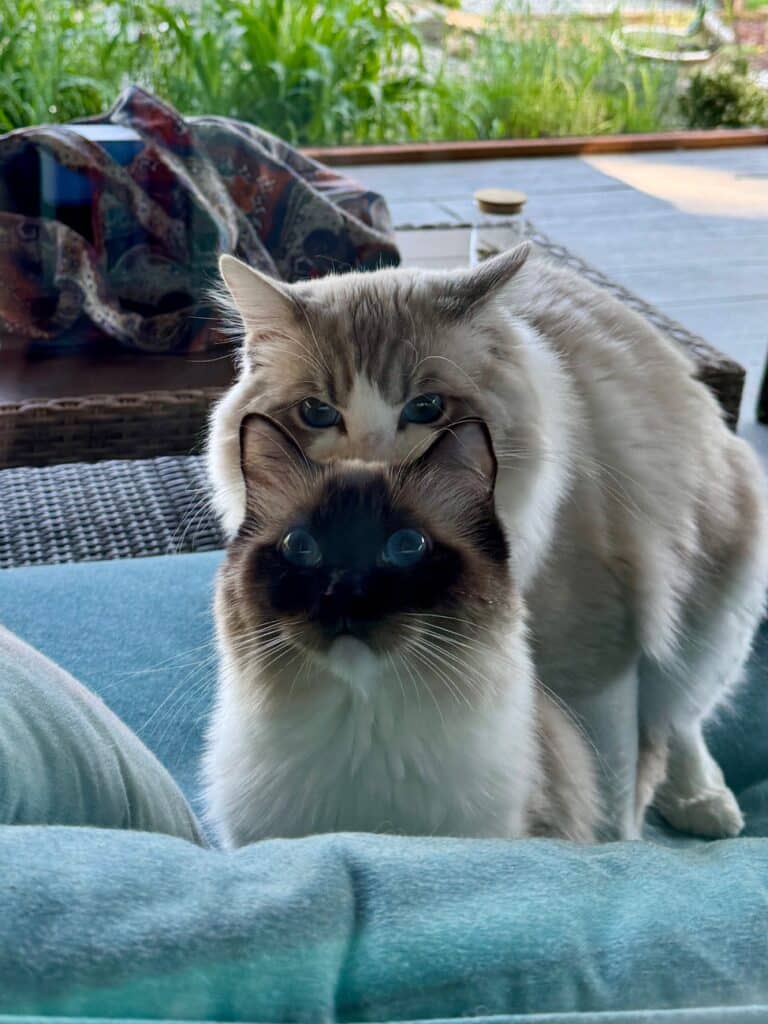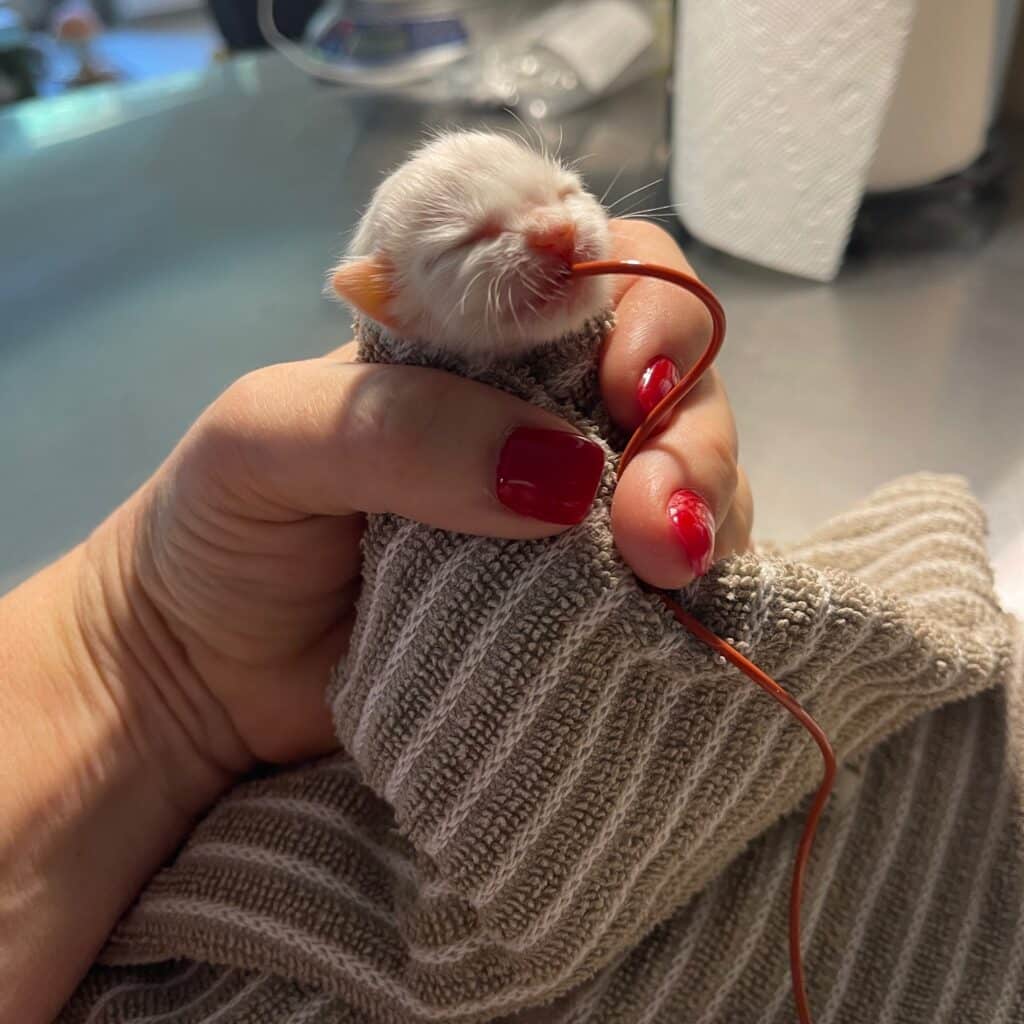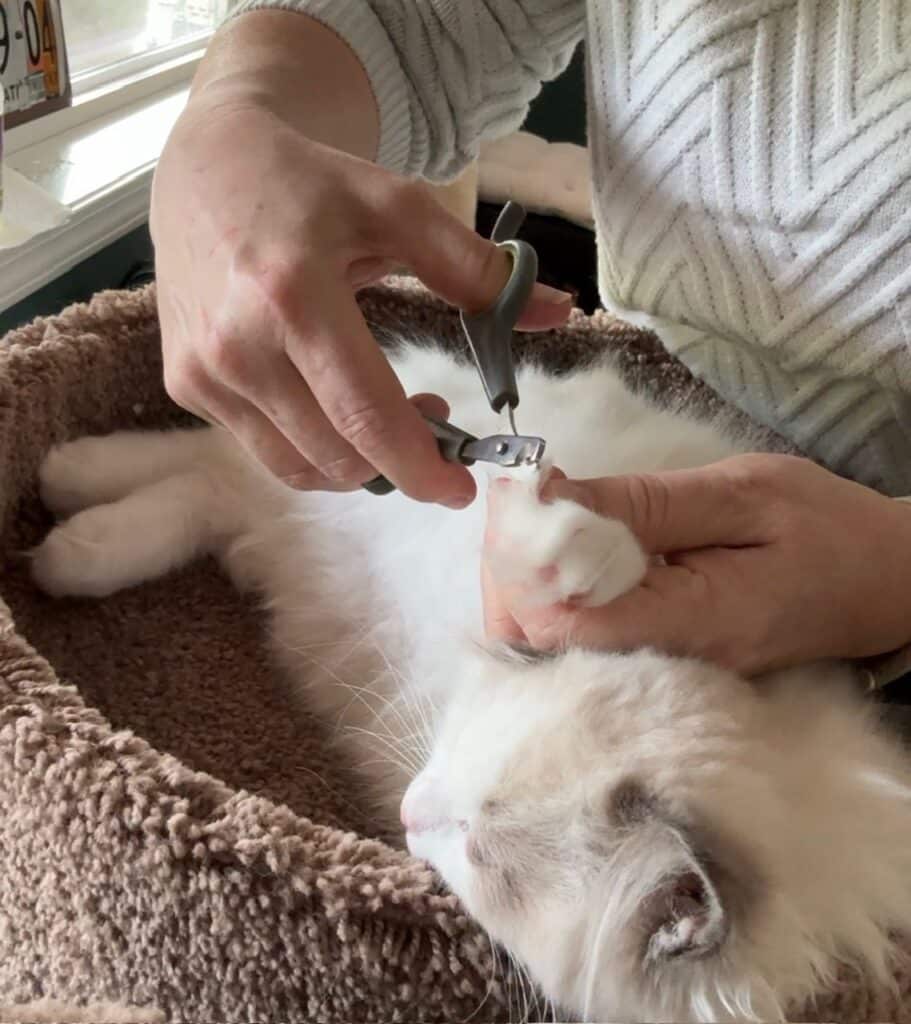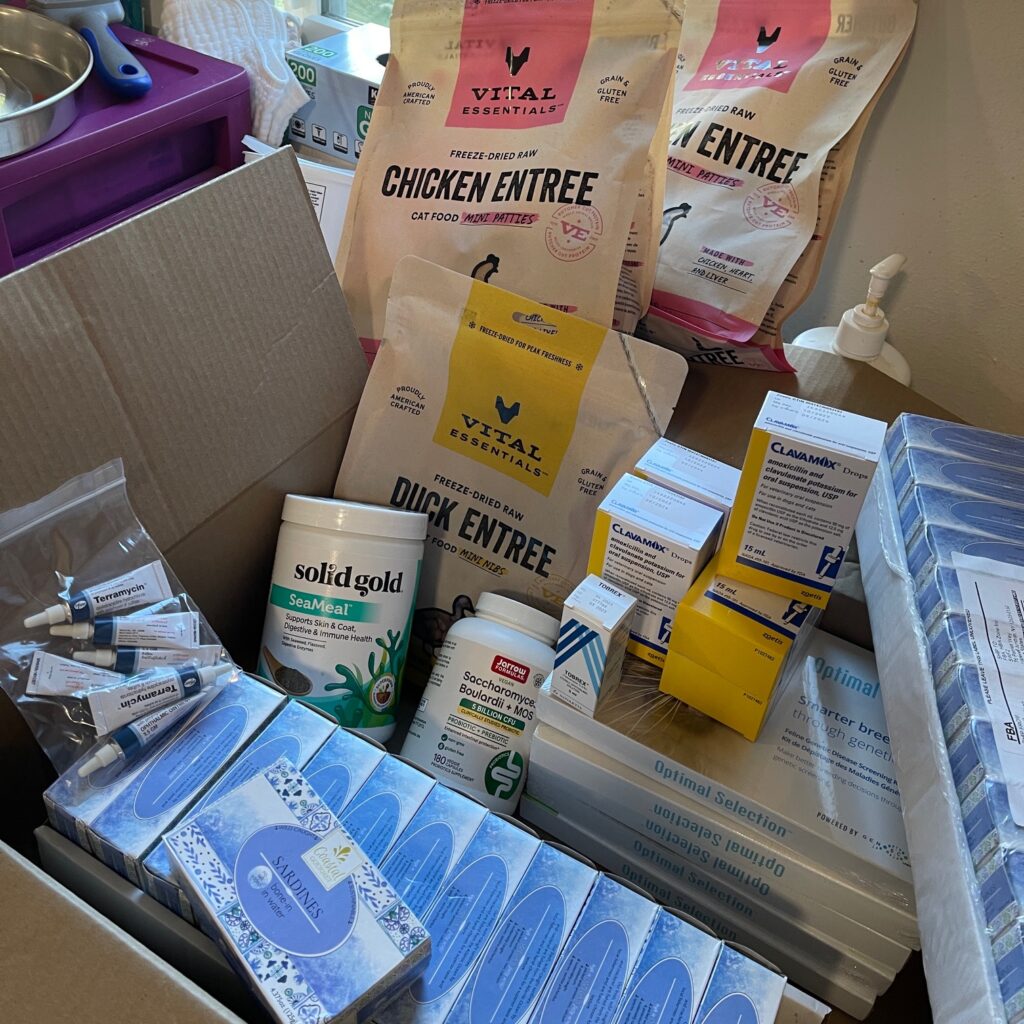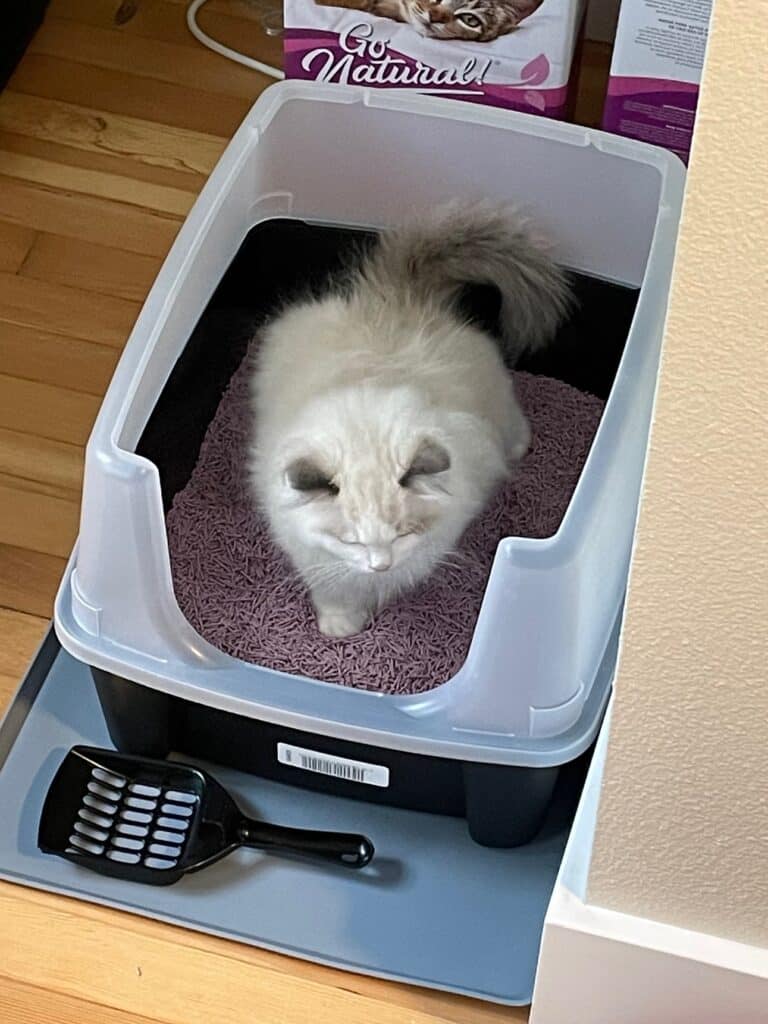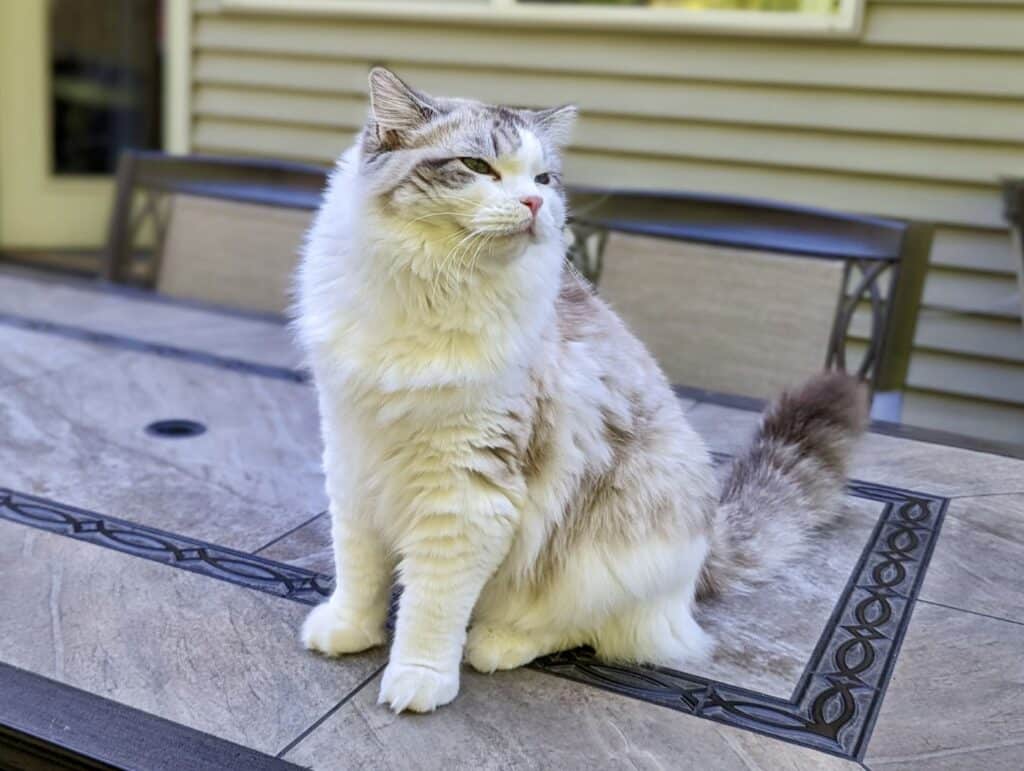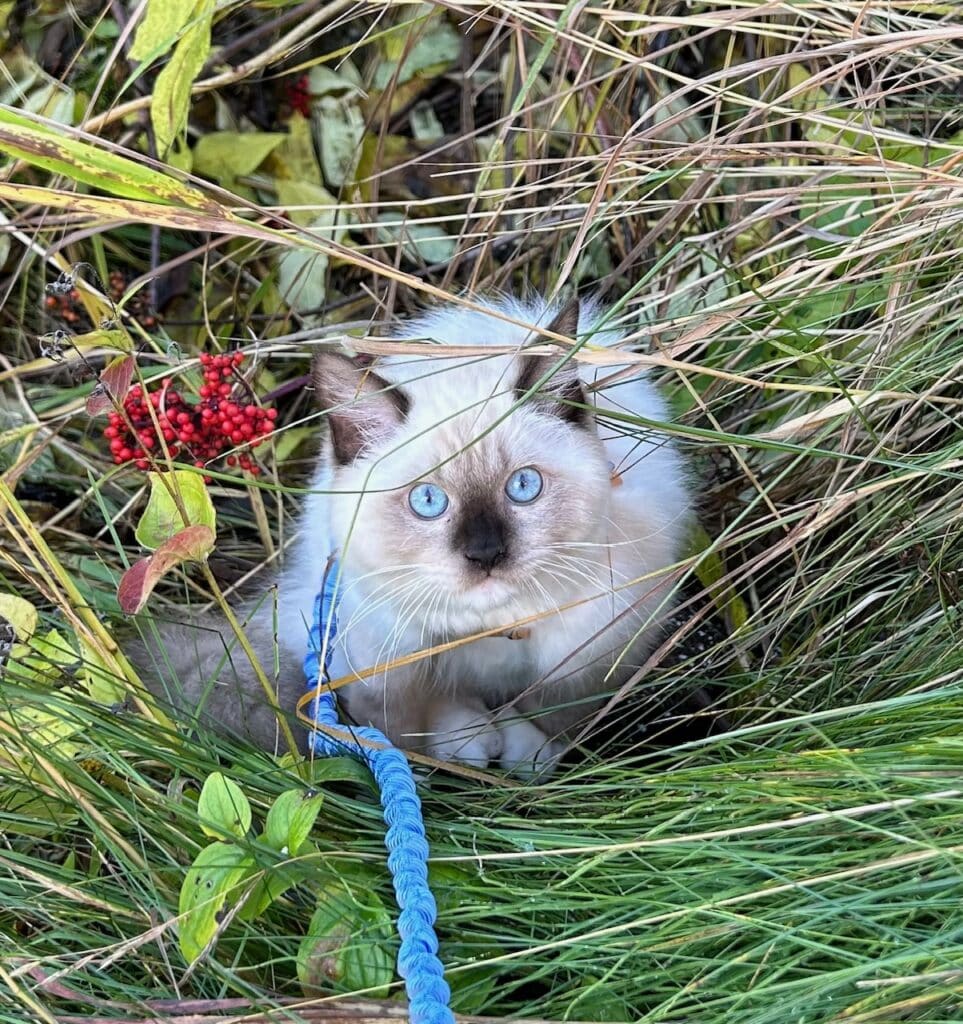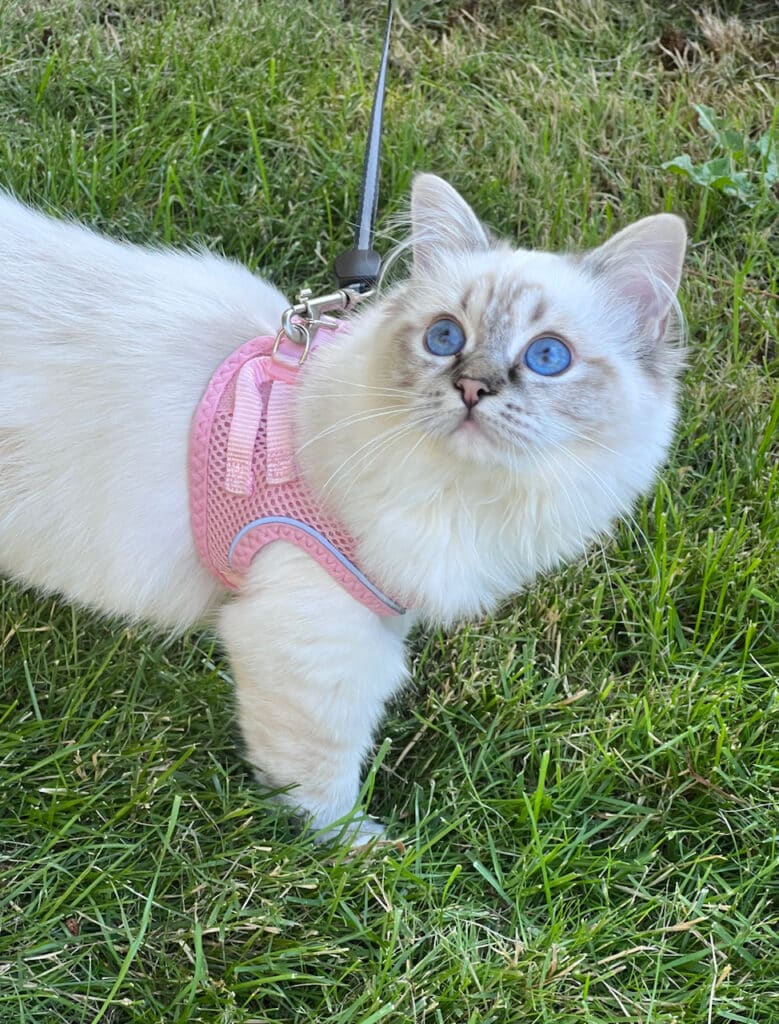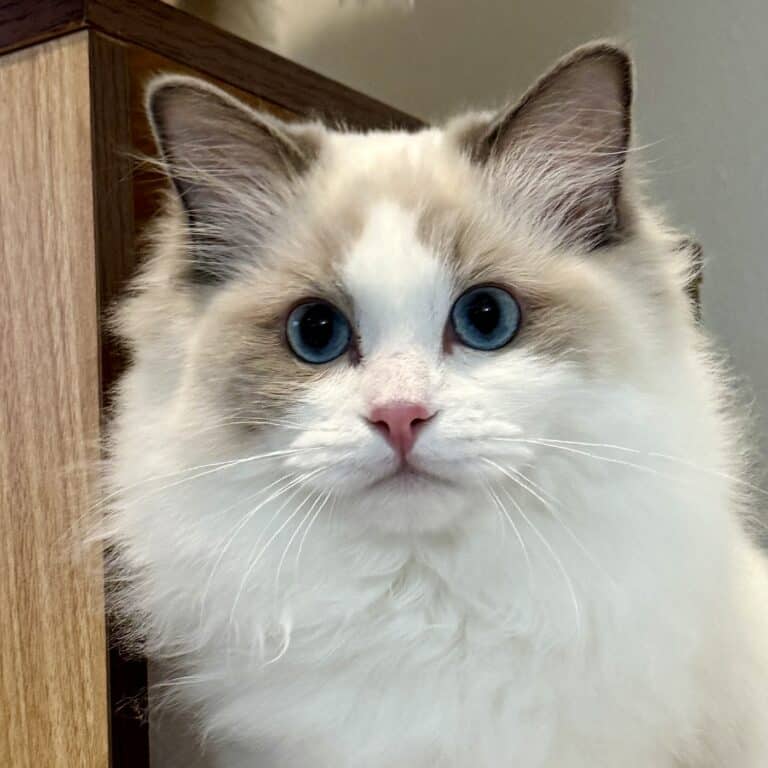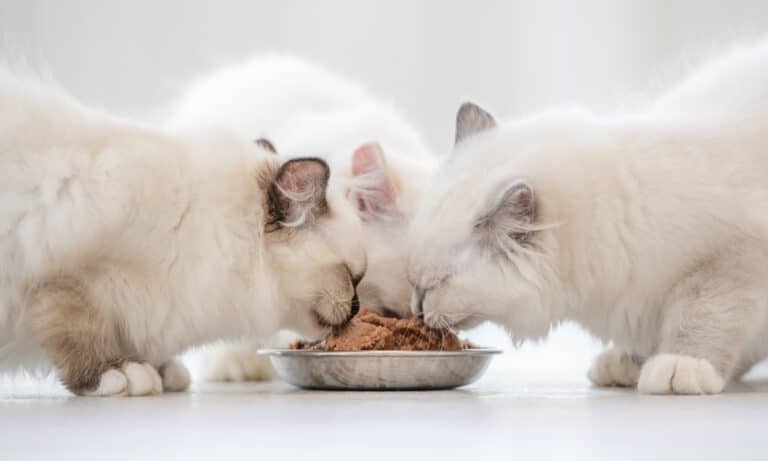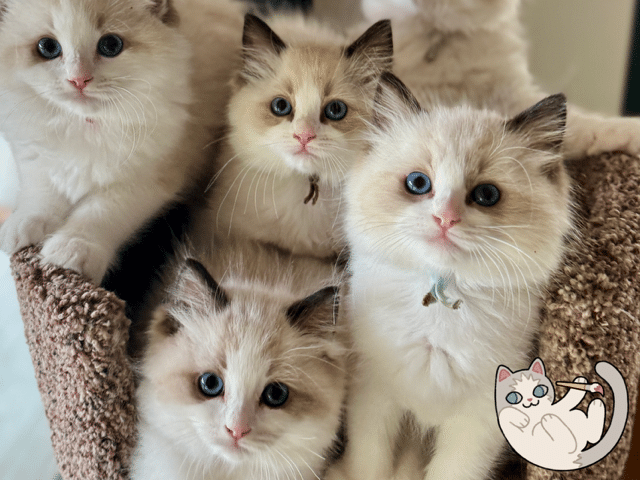Maybe you’ve considered breeding Ragdoll kittens. Feline husbandry is not for the busy, the disorganized, or the otherwise employed. It takes significant time, creativity, resilience, and commitment.
Imagine scooping litter boxes EVERY day.
Imagine weighing each kitten morning and night to ensure mom’s milk supply is up.
Imagine hand-feeding a weak kitten every other hour because she is unable to nurse on her own.
Most days are rewarding and drama-free, but each day is also routinely busy. As a breeder, you will never be bored.
A typical day in the life of a breeder
What Makes Breeding Ragdolls Unique?
Ragdolls are unusually social creatures. And because of this, they require considerably more human interaction. Expect to spend a lot of time with your breeding cats and kittens.
For those interested in breeding Ragdoll kittens, this post provides a quick look at a typical day in the life of a breeder.
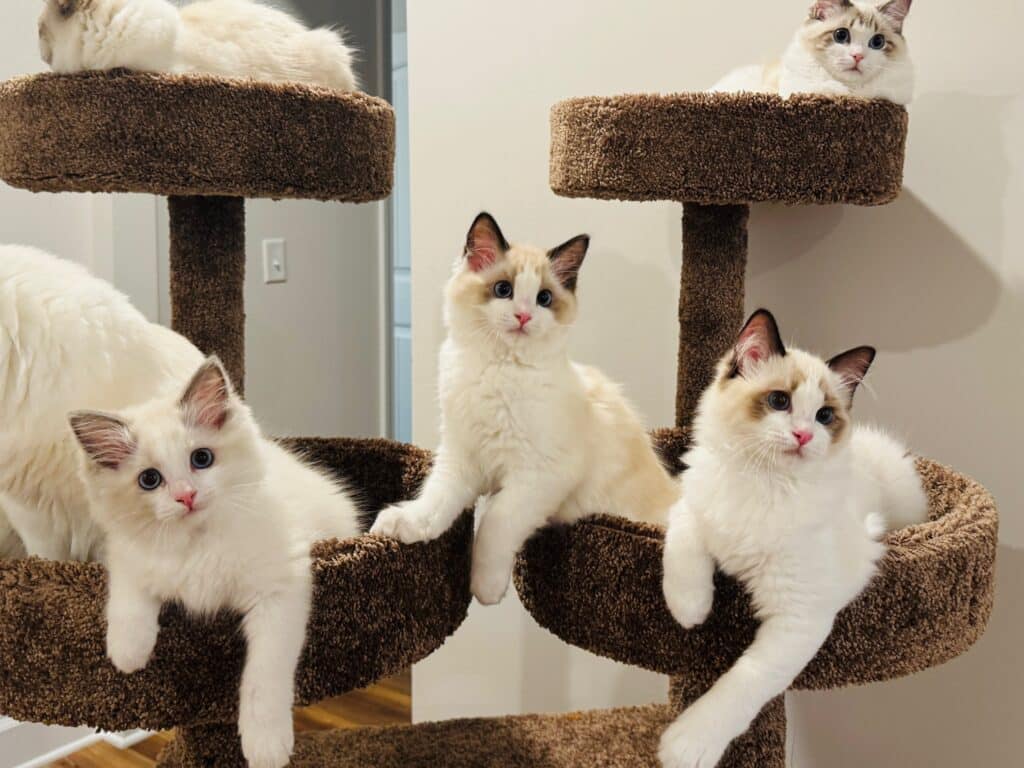
Every day involves feeding, cleaning, and playtime.
Whether breeding Ragdoll kittens on a small or large scale, the core responsibilities are similar. The primary difference lies in the amount of daily time required to manage these tasks.
The various stages and ages present different workloads. Two litters at once can make for a ten-hour day. The absence of kittens is a time of recovery and recharging. This is a good time to reorganize and attend cat shows.
Some days will pass with ease and other days will be challenging. You will rejoice and you will lose sleep. The experience is much like raising children.
Litter Box Duty
A small cattery typically includes one stud and three to five queens. This means your cattery will need approximately five to seven larger litter boxes. Regular sifting of the litter boxes is essential. The boxes used more frequently require attention twice daily.
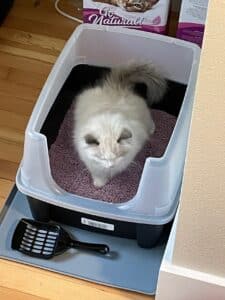
You may observe that your breeding cats show particular interest in your litter box maintenance, often circling your feet or attempting to climb into the boxes. This behavior indicates their curiosity and natural instincts related to their environment.
Pro tip: Consider offering your ragdoll cats their favorite treat
before cleaning the litter boxes to help keep them busy.
On a weekly basis, it is essential to evaluate which litter boxes need to be emptied, sanitized with hot water and bleach, and refilled with fresh litter to maintain optimal hygiene standards.
Feeding and Watering
Water bowls and fountains can become quickly soiled when caring for multiple Ragdoll kittens and cats. We recommend refreshing the fountains weekly. If using stainless steel or porcelein bowls, it is a good idea to empty, sanitize, and refill them daily.
Nutrition plays a vital role in the responsible breeding of Ragdoll cats. Selecting among the many options–dry kibble, canned or pouch foods, freeze-dried raw, homemade, or raw–requires careful consideration. There are pros & cons to each. Once a feeding plan is established, it will be essential to manage feeding schedules, supplies, ordering, and storage. Maintaining a supplementary pantry and arranging auto-shipment of shelf-stable products can help streamline this process.
The day begins with meowing for food and it ends much the same way: with wet foods provided in the mornings and evenings. Dry food bowls should be emptied and refreshed daily, as leaving dry food out for extended periods can lead to spoilage.
Enrichment Activities
Engaging, designated playtime is important and should not be underestimated. While Ragdolls enjoy playing together, they also benefit from intellectual stimulation and social interaction with humans. Because they are eager to please, provide opportunities for positive reinforcement such as affection and treats!
Provide Brain-boosting activities for your ragdoll cat’s daily routine.
Train your Ragdoll cat to use the exercise wheel with a target-based method. Hold a wand slightly out of reach near the wheel. She will move towards the wand. Then, position it at the 3:00 or 9:00 spot to encourage the cat to approach. By consistently guiding her during daily play sessions, she will ultimately learn to walk the wheel independently without the need for the lure.
Rewarding self-play is the best! A clever ragdoll kitty to empty this treat dispenser. We recommend freeze-dried chicken in a canister because all of our cats love them.
Train your Ragdoll cat to spin using lickable treats as a target. Present a small portion of the treat to the cat, then move it in a circular motion to encourage the desired movement. Simultaneously, repeat the command “spin.” Consistent practice is essential, so aim to conduct this training for just a few minutes every day. After each session, provide verbal praise to reinforce positive behavior. The goal is to help your cat understand the “spin” command. He will associate it with rewarding, affectionate interaction upon successful completion.
Encourage Exercise for Your Breeding Ragdoll Cats.
Walk along the length of a room using wand or fishing-rod style toy to promote movement and muscle development. Interactive toys such as spring toys and crunchy mylar balls glide smoothly over hard surface floors, providing your queens with cardiovascular exercise. Some cats are obsessed with sticks and straws. Try these. Silvervine is soothing and great for dental cleaning. And these rechargeable interactive rolling toys will keep them on their paw-pads (toes)!
During inclement weather, consider playing outdoor-themed videos on (YouTube) on a large screen TV.

Harness walking outside is an excellent activity, provided the cat is preventatively treated for fleas and other parasites.
Provide multiple levels of cat trees to encourage climbing and descending. Most Ragdoll cats will avoid scaling and jumping from excessive heights. Incorporating stair steps can help develop agility. Limit access to such structures during late-stage pregnancy to ensure safety. Possible problems include uterine torsion and tearing of the ACL (a critical leg injury).
Entertainment & exercise need not be spendy. We have used common household materials to create diversion for our ragdolls. You can follow social media content creators to get fresh ideas. And check out this video to jumpstart your creativity. (What can we not learn on YouTube?!)
Breeding Kittens Requires Regular Health Inspections
Breeding Ragdoll kittens necessarily involves daily observation of your cats, especially your kittens.
You’re checking nails, ears, weights, fur condition & matting, milk supply, behavior, and more. You are determining what is normal for each cat and kitten so that when there is a fluctuation in any of these areas, you can quickly resolve problems.
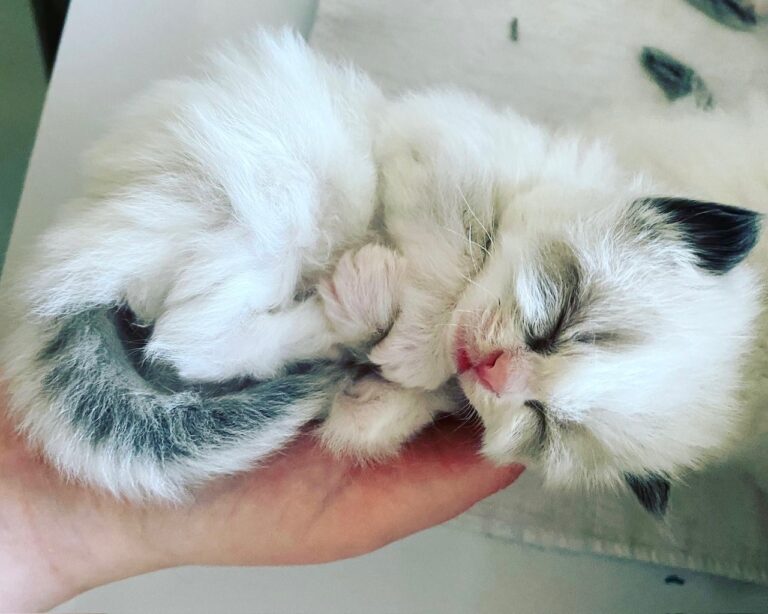
Since these cats are not expressive of their discomfort, it can be challenging for the breeder to identify the cause or originator of a problem. Monitor litter box activity for potential illnesses or parasites. Compare what you see at scooping time to the stool charts to ensure there are no signs of Coccidia, Giardia, or bacterial infections. Small urine clumps will inevitably show you that one or more of your cats has developed a urinary tract infection.
All of these conditions are treatable, but early detection is crucial in preventing an epidemic.
Schedule nail clipping and baths regularly to prevent these tasks from being overlooked. Particularly during litter box training (kitten weeks 5-8), bathing your kittens may be needed as often as daily. We recommend bathing queens at least quarterly to reduce the bacterial load. The presence of bacteria cannot be eliminated, but an excessive degree of pathogens can lead to the spread of infectious diseases. Breeding ragdoll cats requires a scientific approach. Organization and documentation are essential daily functions. Keep dated notes on findings, matings, and remedies.
Breeding Ragdoll Cats: Study & Homework
Some additional responsibilities and preparations may not be immediately apparent. If you have never overseen the care of a queen and stud during the mating period or supervised gestation and labor, it will be beneficial to do some research. Similarly, if you have not cared for a litter of kittens and encountered common health issues, check out Hannah Shaw, the Kitten Lady.
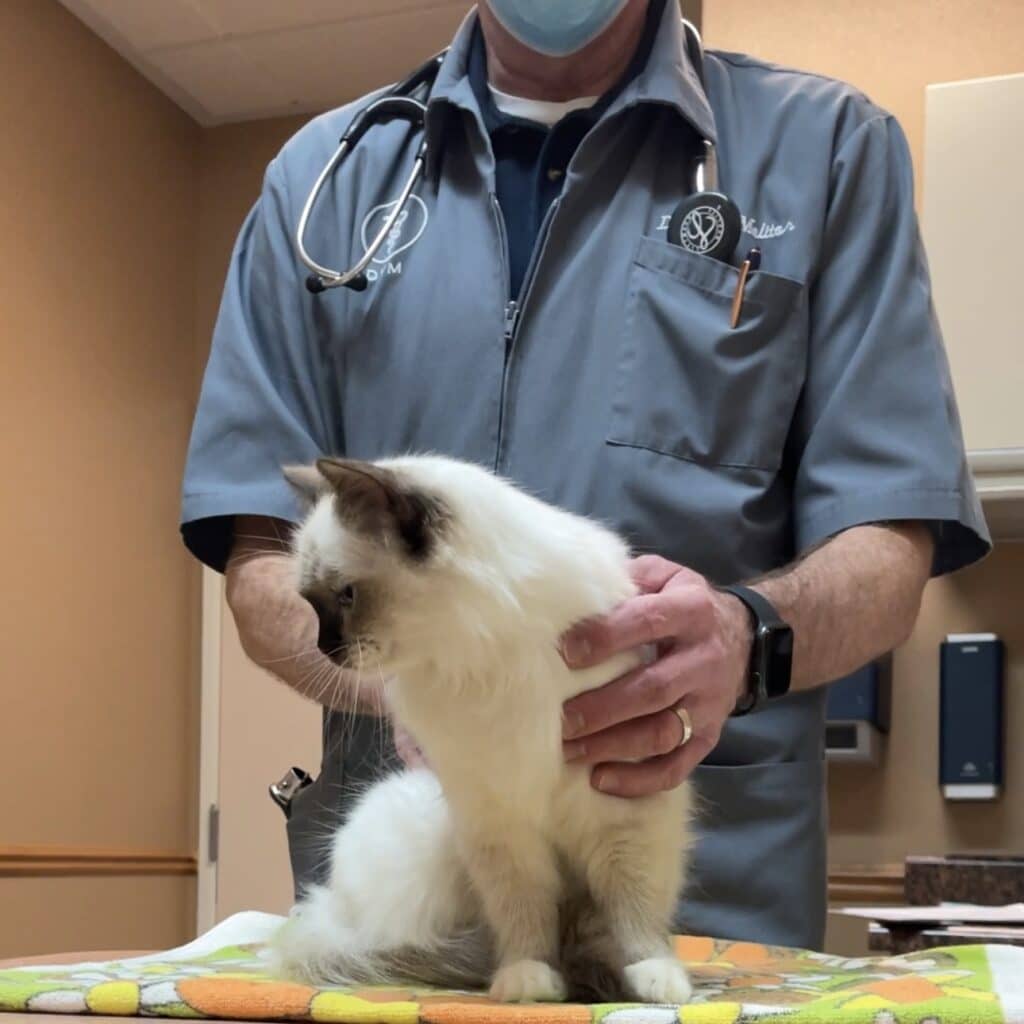
It is also vital to identify reputable, breeder-friendly veterinarians, as there are many practitioners to approach with caution. Breeding Ragdoll kittens cannot be accomplished without a working relationship with health care professionals. While many veterinarians are not reproductive specialists, a good general practitioner will help think through tricky diagnoses and remedies.
Connect with long-time breeders and breeder/veterinarians in social media groups for off-label guidance and immediate support. These cat breeders have been a most treasured resource, providing us with insight and advice that a doctor or veterinary technician cannot offer. In these communities, you can begin to see a consensus and identify who knows medicine and has developed effective protocols.
Marketing your ragdoll kittens
Ensuring that people are aware of your breeding services and that your kittens find suitable homes is a key component of responsible breeding. How will adopters find out about your ragdoll kittens? The last thing you want is your own home overrun by cats. Competition exists, but rest assured that no single breeder can (or should) produce enough to prevent you from rehoming your beautiful, well-socialized ragdoll kittens.
You will never stop learning because breeding ragdoll cats presents new opportunities every day.
Each cat has a unique personality. You will be assessing new dynamics as the “pecking order” in the cat culture changes. A new pedigree, a new health concern, a new behavior, a new marketing strategy, a new litter–all of these will have you consulting resources for growth and improvement. You will never grow bored. And this is why we love it!

